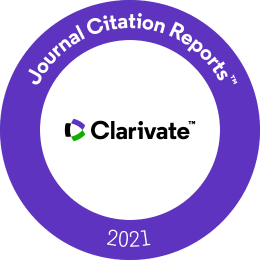Received:
2019-07-25 | Accepted:
2020-05-15 | Published:
2020-06-30
Title
Determinants of the Indonesia's current account balance: an error correction model approach
Abstract
This study aims to investigate the relationship between exchange rate, Domestic Money Supply (M2), real Gross Domestic Product (GDP), and Foreign Direct Investment (FDI) on Indonesia’s current account balance (CAB) in the short and long term. For the purpose of this study, the Error Correction Model (ECM) is used. It uses data during the period 2000-2017. The result showed that (a) M2, real GDP, and FDI in the short-term have not significant effect on Indonesia’s current account but exchange rate has a significant negative effect; (b) in the long-term exchange rate, M2, and real GDP have not significant effect on Indonesia’s CAB, while FDI has a negative significant effect on Indonesia’s CAB. Policy recommendation for government as an implication of this study (a) stabilize the exchange rate in order to decrease current account deficit (CAD); (b) improve the investment climate and issue incentive policies for local investor; (c) increase the competitiveness of export-oriented products and reduce dependence on imports.
Keywords
exchange rate, domestic money supply, real GDP, Foreign Direct Investment, Indonesia's current account
JEL classifications
E51
, F14
, F21
, F23
, F31
, F32
URI
http://jssidoi.org/jesi/article/594
DOI
Pages
3410-3425
This is an open access issue and all published articles are licensed under a
Creative Commons Attribution 4.0 International License
References
Arize, A.C. et al., 2018. A Comparison of the Current Account and the Monetary Theories of Exchange Rate Determination. International Journal of Economics and Finance, 10(2), p.102. Available at: https://doi.org/10.5539/ijef.v10n2p102
Search via ReFindit
Danmola, Rasaq A., Olateju, Adijat O. (2013). The Impact of Monetary Policy on Current Account Balance in Nigeria. IOSR Journal of Humanities and Social Science (IOSR-JHSS), 7(3), 67-72
Search via ReFindit
Das, D. K. (2016). Determinants of Current Account Imbalance in The Global Economy: A Dynamic Panel Analysis. Journal of Economic Structures, 5(1), 1-24. https://doi.org/10.1186/s40008-016-0039-6
Search via ReFindit
Dejeufosse, Damien. (2015). Current Account Adjustment and Monetary Policy: Can International Cooperation Be Benefic? https://www.parisschoolofeconomics.eu/IMG/pdf/damien.pdf
Search via ReFindit
Eldemerdash, H., Metcalf, H., & Maioli, S. (2014). Twin Deficits: New Evidence from a Developing (oil vs. non-oil) Countries' Perspective. Empirical Economics, 47(3), 825-851. https://doi.org/10.1007/s00181-013-0771-9
Search via ReFindit
Endegnanew, M. Y., Turner-Jones, M. T., & Yartey, C. A. (2012). Fiscal Policy and the Current Account: Are Microstates Different? (No. 12-51). International Monetary Fund.
Search via ReFindit
Erdem, E., Ucler, G., & Bulut, U. (2014). Impact of Domestic Credits on The Current Account Balance: A Panel ARDL Analysis for 15 OECD Countries. Aktual'Ni Problemy Ekonomiky = Actual Problems in Economics, (151), 408-416. https://www.proquest.com/docview/1655541089
Search via ReFindit
Gnimassoun, B., & Mignon, V. (2016). How Do Macroeconomic Imbalances Interact? Evidence from A Panel VAR Analysis. Macroeconomic Dynamics, 20(7), 1717-1741. https://doi.org/10.1017/S136510051500005X
Search via ReFindit
Grubišić, Z., Kamenković, S. & Zdravković, A., 2018. Impact of government balance and exchange rate regime on current account during the economic cycle: evidence from CEE countries. Zbornik radova Ekonomskog fakulteta u Rijeci: časopis za ekonomsku teoriju i praksu/Proceedings of Rijeka Faculty of Economics: Journal of Economics and Business, 36(1), pp.309–336. Available at: https://doi.org/10.18045/zbefri.2018.1.309
Search via ReFindit
Hoque, KMA. & Rao, Ananth. (2016). Sustainability of Malaysian Current Account Balance: Evidence from ARDL Bounds Tests Approach. Journal of Developing Area, 50(5).
Search via ReFindit
Insel, A., & Kayikçi, F. (2013). Determinants of The Current Account Balance in Turkey: An ARDL Approach. Ekonomska Istrazivanja, 26(1), 1-16. https://www.proquest.com/docview/1466380871
Search via ReFindit
Jaffri, A. A., Asghar, N., Ali, M. M., & Asjed, R. (2012). Foreign Direct Investment and Current Account Balance of Pakistan. Pakistan Economic and Social Review, 50(2), 207-222. https://www.proquest.com/docview/1346868490
Search via ReFindit
Kandil, M. (2012). Determinants of cyclicality in the current account balance. International Journal of Development Issues, 11(3), 235-258. https://doi.org/10.1108/14468951211262279
Search via ReFindit
Kasasbeh, H. A. (2018). The Effect of Budget Deficit Financing on The Current Account of The Balance of Payments Using a Macroeconomic Simulation Model. International Research Journal of Applied Finance, 9(7), 336-350. https://www.proquest.com/docview/2113240808
Search via ReFindit
Khan, M. A., & Saeed, S. (2012). Twin Deficits and Saving-Investment Nexus in Pakistan: Evidence from Feldstein-Horioka Puzzle. Journal of Economic Cooperation & Development, 33(3), 1-36. https://www.proquest.com/docview/1112261387
Search via ReFindit
Kikerkova, I., Naumovska, E., Toshevska-Trpchevska, K., & Disoska, E. M. (2018). Vector Error Correction Model on FDI and Their Impact in The Republic of Macedonia. Zagreb International Review of Economics & Business, 21(2), 19-35. https://doi.org/10.2478/zireb-2018-0012
Search via ReFindit
Kovačević, R. (2017). Current Account Determinants in Southeast European (SEE) Countries – Panel Approach. Zbornik Radova Ekonomski Fakultet u Rijeka, 35(2), 391-415,417-424. http://dx.doi.org/10.18045/zbefri.2017.2.391
Search via ReFindit
Roy, A. G. (2012). U.S. Foreign Indebtedness, Monetary Policy, and Economic Growth. International Journal of Economic Perspectives, 6(2), 196-205. https://www.proquest.com/docview/1461990221
Search via ReFindit
Salman, A., & Feng, H. X. (2009). Empirical Analysis of The Impact of FDI on Pakistan's Current Account Balance. International Journal of Organizational Innovation (Online), 2(2), 143-155. https://www.proquest.com/docview/194693112
Search via ReFindit
Sasongko, G., Huruta, A.D., Wardani, A. (2019). Does the Wagner’s Law exist in a strategic national area? An evidence from Kedungsepur – Indonesia. Insights into Regional Development, 1(2), 99-117. https://doi.org/10.9770/ird.2019.1.2(2)
Search via ReFindit
Wanjau, Boniface M. (2014). The Relationship among Real Exchange Rate, Current Account Balance, and Real Income in Kenya. International Journal of Business and Social Science, Vol. 5, No. 9(1).
Search via ReFindit
Željko Bogdan, Cota, B., & Erjavec, N. (2017). Current Account Balance and Export Performances: Evidence Based on New EU countries. Zagreb International Review of Economics & Business, 20(2), 33-48. http://dx.doi.org/10.1515/zireb-2017-0016
Search via ReFindit














 RSS 1.0
RSS 1.0
